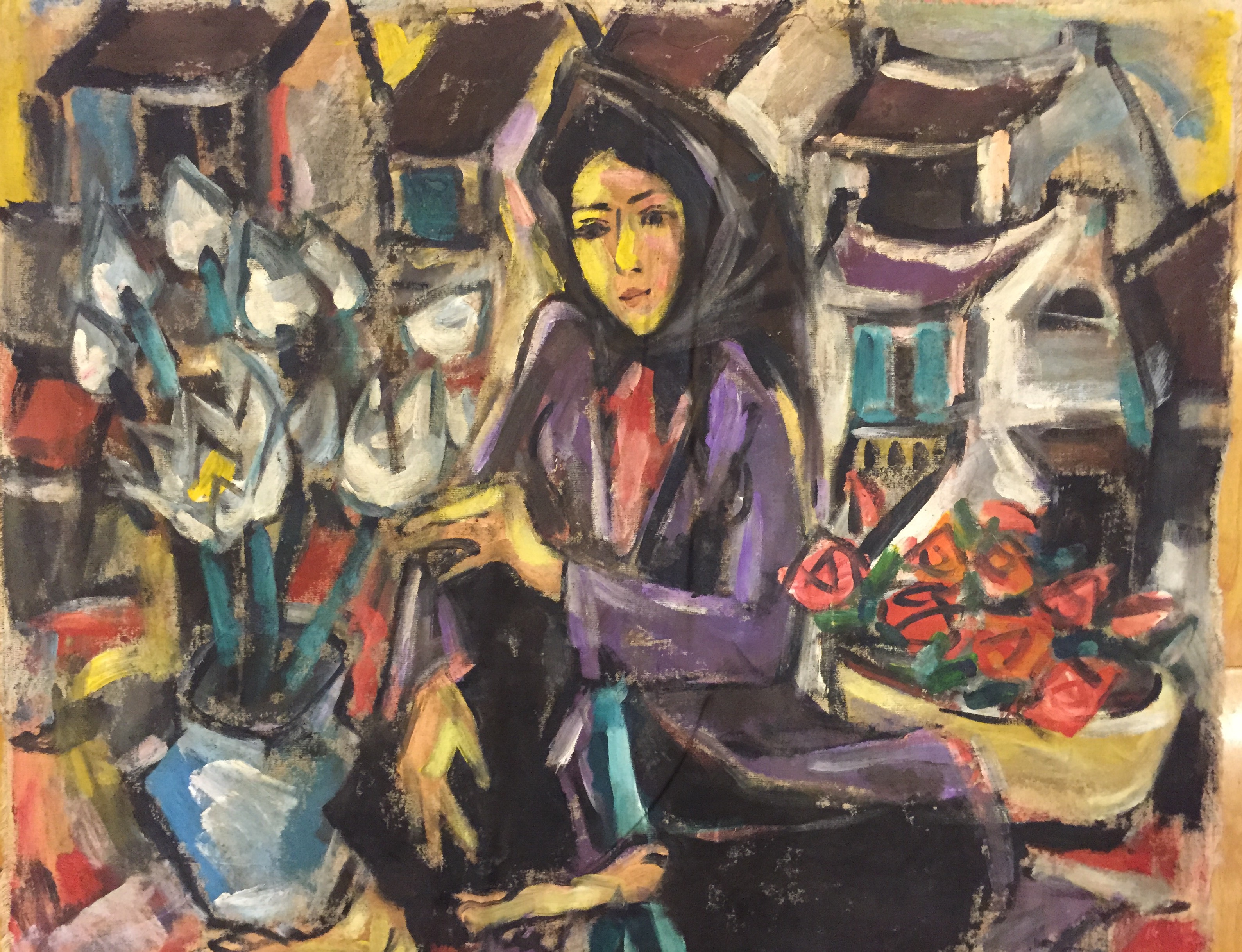
Painting is like exercising for painter Pham Luc. If he doesn’t paint something one day he feels slightly ill, which perhaps explains his prolific output and reputation as Vietnam’s Van Gogh. Born in 1943, Luc has been around paint brushes for some 70 years. From the age of three he tried to turn things into paint brushes. It could be a piece of brick or charcoal, a tree branch, or a stone, and everywhere was his canvas. Many times he was scolded by his neighbors, whose house walls he used to express himself. Luckily, he later found a wide sand bank by the riverside near his home, where he could paint on the sandy canvas with a tree branch.
Growing up during wartime, the young Luc became a soldier after graduating from the Hanoi College of Fine Arts (now the Vietnam University of Fine Arts). But his passion for painting never ceased. As one of his hands held a gun, the other always held a brush. His constant companion has been paper, a brush, and colors. "The mission of a painter is to record what he observes," Luc explained, "Life is so colorful. I don’t want to miss a thing."
At times so focused on not missing a moment of life, he in turn often missed a train or was taken advantage of by thieves. Losing his tools was a disaster because such things were scarce in wartime. Necessity, though, is the mother of invention. Again he tried to turn things into a canvas, such as sackcloth or a hammock, which these days his fans crazily hunt for.
Luc never limits himself in a particular style either. From his studies he took on styles from the French school of European art, Chinese water colors in Asian art, and four of the most famous and successful Vietnamese painters since 1945. Nghiem, Lien, Sang and Phai—who all graduated from L’Ecole des Beaux Arts de l’Indochine— diverged on totally different paths, with Nghiem’s convention, Lien’s softness and femininity, Sang’s strength, and Phai’s realism, Luc’s art reflects where East meets West. He also challenges himself in different mediums including oil paintings, lacquer, silk paintings, and wood engraving.

After finishing his army service, he started different canvases in every corner in his home, which became his working space. When painting a lacquer work and getting some of the materials stuck, he may change it to an oil painting and continue in a different mood. "Just leave me alone in a room with brushes, colors and an old radio playing pre-war Vietnamese music and I’ll work spontaneously, by feeling, without sketches," he said.
Due to regular headaches from high blood pressure, Luc has suffered from insomnia since he was 14. Many new ideas flash into his mind at nights when he tosses and turns in bed. He usually has no idea whether it comes from reality or a dream, but he quickly gets to the canvas to depict the idea. Whenever he touches a brush, his headaches ease and he feels like falling into a dream. The next day he sometimes forgets his nocturnal creativity, waking in the morning to be pleasantly surprised at the new addition to his collection.
The characters in Luc’s paintings are also diverse, such as a local market, Tet paintings, depictions of Ca trù and Ả Đào songs, the hero Thanh Giong, or the poet Nguyen Du. Women seem to inspire him more. It may be a woman in an old dress giving her son a bicycle ride during wartime, a woman looking for mussels in modern times, or an old woman selling some fruit. His sympathy towards and love of women in his paintings brought him true love. A French woman who fell in love with his art bought many of his paintings on credit. Three years later she took him to a villa, which was the payment, and proposed to him. With his wife’s support, his paintings have been displayed in Europe and increased his fan base.

Among modern Vietnamese painters, Luc is the only one who has a fan club collecting his work. More than 100 of its members have some 6,000 of his paintings and regularly hold exhibitions. One, Tony Olive from Australia, who has 100 of Luc’s paintings, opened an exhibition in 2009 and every piece was sold. He felt regret at the scale of the exhibition’s success, however, and negotiated to buy back four of the paintings.
In a recent interview with writer Nguyen Ngoc about Pham Luc, Thomas J. Vallely, Director of the Harvard Vietnam Program, said his favorite place in Vietnam was not a city or a town but Luc’s concrete studio house. Whenever he visits Luc he talks about art and has learned news things about Vietnam, past and present. He sees Luc’s work as being rich in culture, history and heritage, through varied and diverse themes, with an artistic language on war the difficulties and sorrows of life, making his creative value not just Vietnamese, but universal.














